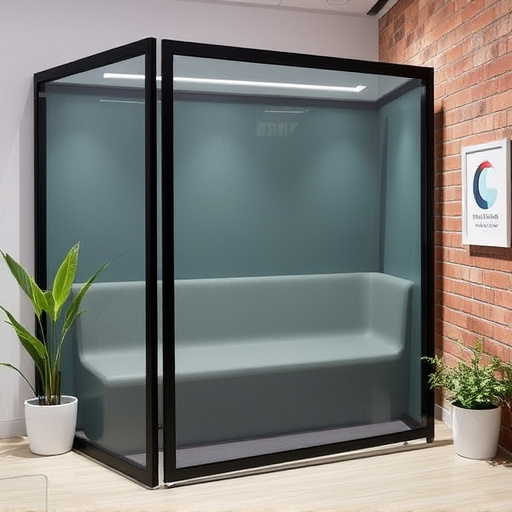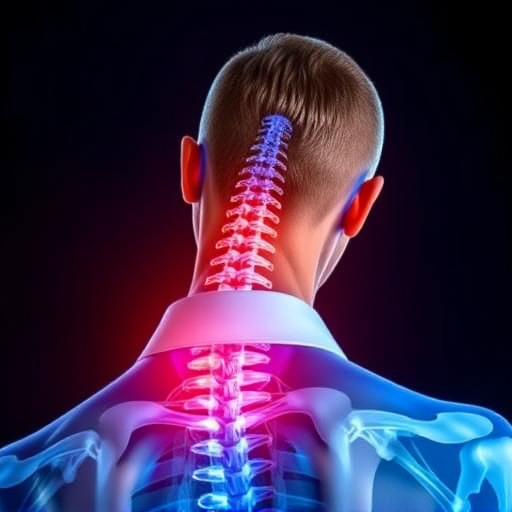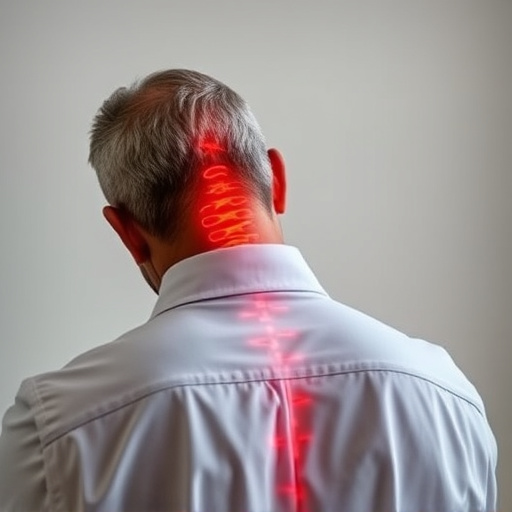Chronic cranial discomfort, including headaches and migraines, severely impacts daily life. Diagnosing this condition requires a thorough process, leading to tailored treatment plans. Workers' Compensation insurance provides crucial support for work-related injuries, offering specialized care like physical therapy, cognitive behavioral therapy, and advanced therapies. This comprehensive approach, especially in rehabilitation, helps individuals regain quality of life and return to productivity after head injuries or conditions like migraines. Case studies highlight successful transformations, emphasizing the importance of access to specialized workers' compensation injury care resources for improved outcomes.
Chronic cranial discomfort (CCD), often misunderstood, can significantly impact daily life. This article delves into the complex world of CCD, exploring its causes, diagnosis, and specialized treatment options. We examine the unique role of workers’ compensation in facilitating access to advanced care for injured workers. From rehabilitation strategies to inspiring recovery stories, this guide offers a comprehensive roadmap for patients and caregivers navigating the journey towards long-term relief.
- Understanding Chronic Cranial Discomfort: Causes and Diagnosis
- The Role of Workers' Compensation in Specialized Care
- Advanced Treatment Options for Long-Term Relief
- Rehabilitation and Management Strategies
- Case Studies: Successful Recovery Stories
- Navigating the Journey: Support for Patients and Caregivers
Understanding Chronic Cranial Discomfort: Causes and Diagnosis

Chronic cranial discomfort, often referred to as chronic headache or migraine, is a complex and persistent condition that can significantly impact an individual’s quality of life. It is characterized by prolonged headaches or migraines that fail to resolve with typical over-the-counter treatments or rest. This ongoing suffering can be triggered by various factors, including but not limited to, stress, certain foods, environmental stimuli, or even underlying structural issues in the head and neck region.
Diagnosing chronic cranial discomfort involves a meticulous process where healthcare professionals consider both the patient’s medical history and specific symptoms. They may employ diagnostic tools such as detailed questionnaires, physical examinations, and advanced imaging techniques like MRI or CT scans. In many cases, especially when related to workers compensation injury care, professionals look for patterns and triggers to determine if the discomfort is a result of an occupational hazard or previous injuries.
The Role of Workers' Compensation in Specialized Care

Many individuals suffering from chronic cranial discomfort, often resulting from work-related injuries or accidents, find solace through specialized care facilitated by Workers’ Compensation insurance. This safety net plays a pivotal role in ensuring that workers who have sustained head injuries or conditions like chronic migraines or tension headaches receive the necessary medical attention and treatment. Workers’ Compensation programs are designed to provide comprehensive injury care, covering various aspects of recovery and rehabilitation.
The process typically involves a thorough assessment by healthcare professionals specializing in occupational medicine or neurology, who work closely with insured individuals to develop tailored treatment plans. This specialized care may include medications, physical therapy, counseling for stress management, and other interventions aimed at managing pain and improving quality of life. By recognizing the impact of work-related injuries on mental and physical health, Workers’ Compensation programs offer a supportive framework, enabling affected workers to navigate their journey towards recovery and return to productive lives.
Advanced Treatment Options for Long-Term Relief

In cases where traditional treatments have been ineffective, advanced treatment options offer promising long-term relief for chronic cranial discomfort. Specialized care for workers compensation injury victims plays a crucial role in navigating these complex medical scenarios. Advanced therapies, such as neurostimulation and targeted drug injections, are designed to interrupt pain signals and reduce inflammation, providing significant relief for those suffering from persistent headaches or facial pains.
These innovative treatments often form part of a comprehensive care plan that may also include physical therapy, cognitive behavioral therapy, and lifestyle adjustments. Workers compensation insurance programs recognize the impact of chronic pain on an individual’s ability to work and perform daily tasks. As such, they cover specialized care, ensuring that injured workers have access to these advanced treatment options, promoting faster recovery, and improving overall quality of life.
Rehabilitation and Management Strategies

Chronic cranial discomfort, often a result of head injuries or conditions like migraines and tension headaches, requires specialized rehabilitation and management strategies to effectively alleviate symptoms. For individuals who have experienced a workers compensation injury involving head trauma, tailored care plans become even more critical. These plans may include physical therapy, targeting specific muscle groups involved in facial expression and head movement, to reduce strain and pain.
Additionally, behavioral interventions such as biofeedback and stress management techniques can play a significant role. By teaching individuals how to control physiological responses associated with discomfort, these strategies empower them to better manage their symptoms over time. Workers compensation injury care emphasizes a holistic approach, considering not just the physical aspects but also the psychological well-being of the patient, ensuring comprehensive rehabilitation for chronic cranial discomfort.
Case Studies: Successful Recovery Stories

In the context of chronic cranial discomfort, case studies highlight the transformative power of specialized worker’s compensation injury care. Many individuals struggling with this condition have found relief and regained their quality of life through innovative treatment approaches. These success stories demonstrate the importance of personalized therapies tailored to address the unique needs of each patient.
For instance, some cases feature patients who had been dealing with persistent headaches and facial pain for years, significantly impacting their ability to work and engage in daily activities. With access to comprehensive worker’s compensation injury care, they underwent a combination of treatments including physical therapy, biofeedback, and specialized medication management. As a result, these individuals experienced significant reductions in pain levels, leading to improved productivity and overall well-being. These positive outcomes underscore the value of dedicated support systems in helping workers overcome chronic injuries and return to their active lifestyles.
Navigating the Journey: Support for Patients and Caregivers

Navigating the journey of chronic cranial discomfort can be challenging, especially for patients and caregivers dealing with a workers’ compensation injury. This complex condition demands specialized care, and support is crucial at every step. Many patients face the daunting task of understanding their condition, managing symptoms, and adapting to new routines. Caregivers play an invaluable role, providing emotional support, assisting with daily tasks, and advocating for their loved ones’ needs.
This supportive network enables individuals to cope with the physical and emotional toll of chronic cranial discomfort. Resources tailored for workers’ compensation injury care can offer guidance, ensuring patients and caregivers have access to necessary tools and knowledge. By fostering a collaborative environment, these support systems contribute to improved outcomes, helping individuals navigate their journey towards healing and restored well-being.














